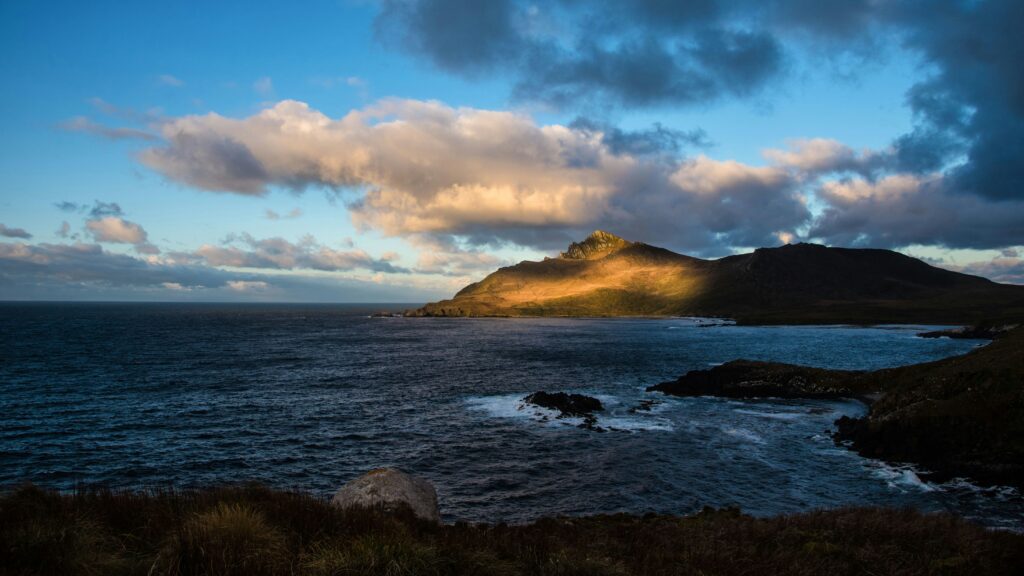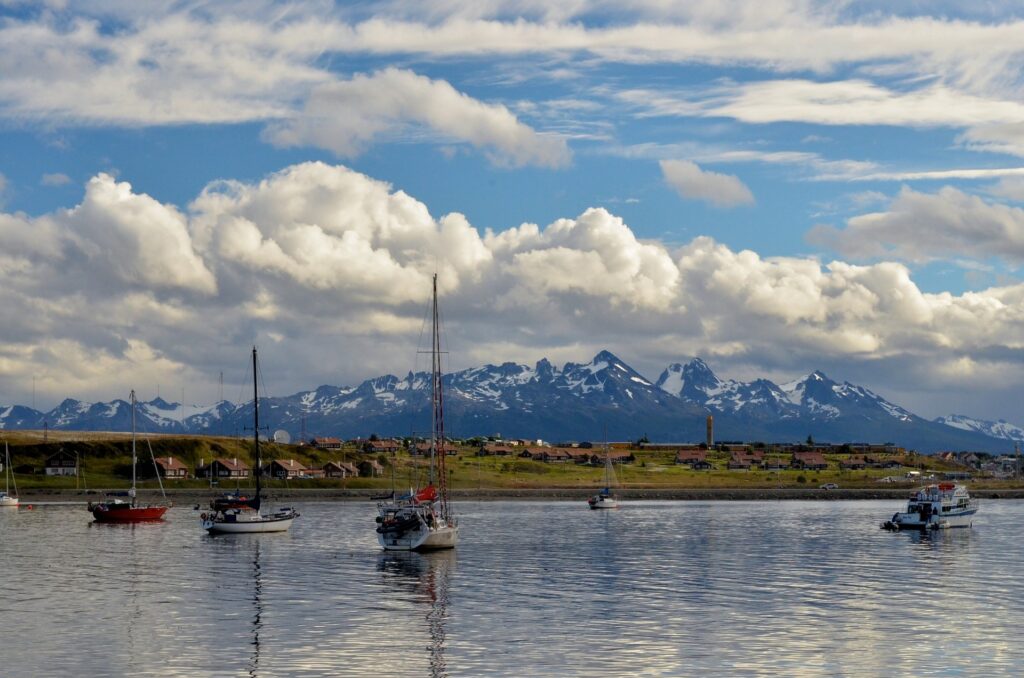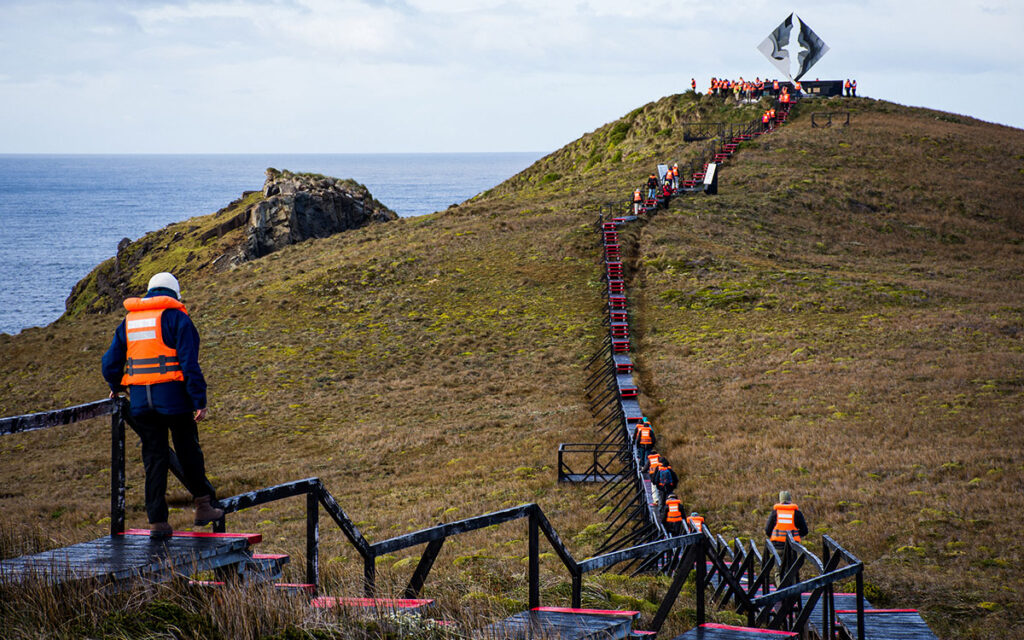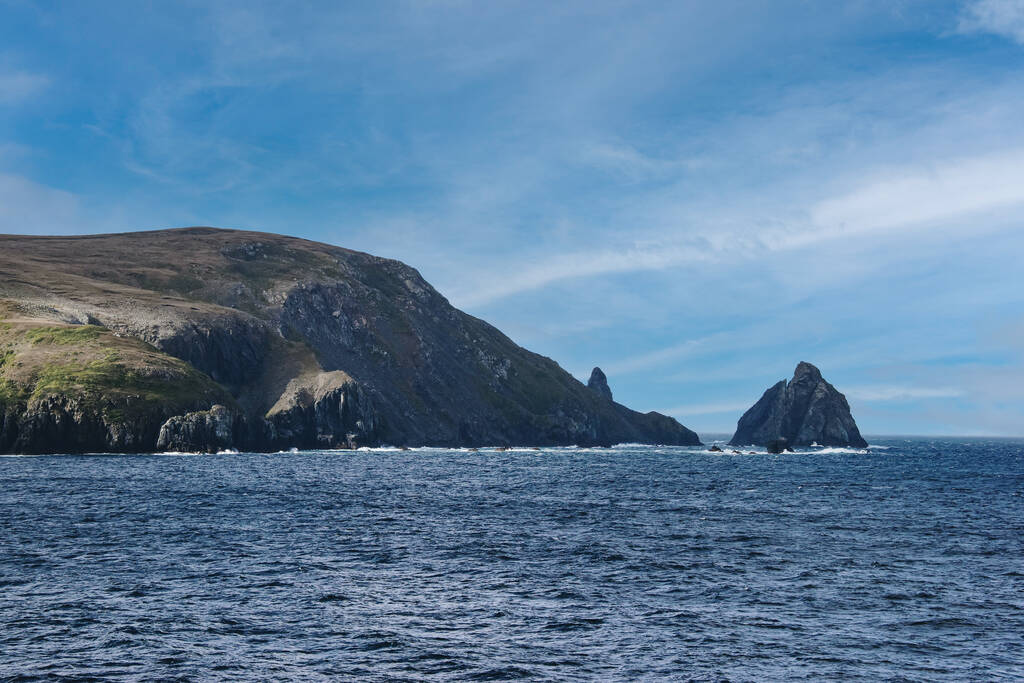Introduction
Cape Horn, known as “Cabo de Hornos” in Spanish, holds a near-mythical status among sailors and adventurers. This rugged headland, located on Hornos Island in the Tierra del Fuego archipelago of southern Chile, marks the northern boundary of the Drake Passage and represents the southernmost point of the South American continent. A part of many legendary tales and a benchmark of nautical navigation, Cape Horn has attracted the imagination of explorers, historians, and modern-day adventurers alike.

Geographic and Historical Significance
Cape Horn stands as a sentinel at the confluence of the Atlantic and Pacific Oceans. Its coordinates, approximately 55.98° S latitude and 67.27° W longitude, place it nearly at the bottom of the globe. The waters around Cape Horn are notorious for their treacherous conditions; unpredictable weather, strong currents, and colossal waves make sailing around the cape a formidable challenge.
More:Read about On Explore The Rich History of Buenos Aires, Argentina.
Historically, Cape Horn was a critical waypoint for sailing ships traveling between Europe and Asia, before the construction of the Panama Canal. The treacherous journey around the Horn was often considered the epitome of a sea captain’s prowess and skill. Legendary explorer Ferdinand Magellan was among the first Europeans to navigate these perilous waters in the 16th century. The term “rounding the Horn” came into being during the Age of Sail, signifying the arduous passage around this formidable cape.
The Perils of Sailing Around Cape Horn
The saying goes, “Below 40 degrees south, there is no law; below 50 degrees south, there is no God.” This maxim highlights the notoriously harsh conditions that sailors must face when navigating around Cape Horn. Gale-force winds, sometimes exceeding 60 knots, and massive waves that can reach heights of up to 30 meters conspire with icebergs and submerged rocks to create a perilous maritime environment.
Storms in this region can develop rapidly and are often intense, with conditions changing from relatively calm to violently tumultuous in a matter of hours. The Roaring Forties and Furious Fifties are latitudinal zones infamous for their relentless westerly winds, which drive a perpetual cycle of storms across the Southern Ocean. Mariners must be well-prepared, possessing not only advanced seamanship skills but also resilient vessels capable of withstanding the ocean’s fury.
The Journey to the Cape

Sailing to Cape Horn begins with meticulous planning and thorough preparation. Modern adventure sailors, seasoned navigators, and intrepid yachtsmen who undertake this voyage often depart from Ushuaia, Argentina, the southernmost city in the world. Ushuaia sits at the terminus of the Andes and offers a strategic starting point for the journey across the Beagle Channel and into the untamed waters beyond.
The initial leg of the voyage involves a southward sail through the Beagle Channel, named after HMS Beagle, the ship on which Charles Darwin sailed during his historic voyage. The channel’s relatively sheltered waters provide a deceptive calm, a stark contrast to the tempestuous conditions that lie ahead.
More: Wanted to download Odisha Magazines, visit here
Upon exiting the Beagle Channel, sailors enter the Drake Passage, the body of water that separates South America from Antarctica. Covering approximately 800 kilometers (500 miles), the Drake Passage is one of the most formidable waterways on Earth. It is here that the sails catch the full force of the Roaring Forties and Furious Fifties, pushing vessels toward the notorious cape.
The Approach and Rounding of the Horn
As sailors approach Cape Horn, the headland’s craggy cliffs and rugged promontory come into view, often shrouded in mist and besieged by crashing waves. The sight is both awe-inspiring and foreboding—a testament to the raw power and isolation of this remote region.
Experienced sailors use the local maritime charting, weather forecasts, and GPS navigation to plot a safe course. The approach is made cautiously, often requiring tacking against headwinds and navigating around submerged rock outcroppings. Rounding the cape, the sense of accomplishment is palpable; the act of sailing past this legendary landmark is a rite of passage for mariners, a testament to human endurance and seamanship.
Vessels passing Cape Horn often give a nod to the monument placed on the island in honor of the sailors who perished attempting the perilous journey. The Albatross Monument, erected by the Chilean Navy, features a skeletal albatross and stands as a solemn reminder of the dangers faced by seafarers over centuries.
The Return to Calm Waters
After successfully rounding Cape Horn, sailors may choose to navigate northward into the sheltered waters of the Pacific or retrace their path back to the Atlantic. Some continue onward, venturing into the pristine wilderness of the Antarctic Peninsula, while others make their way to the safety of Puerto Williams or return to Ushuaia.
Regardless of their further journey, sailors carry with them the indelible memory of having conquered one of the most challenging maritime routes. The experience forges a deep connection to the age-old traditions of sea navigation and imparts a sense of having triumphed over nature’s greatest trials.
Conclusion
Sailing to Cape Horn is more than just a maritime adventure—it’s a profound journey into the soul of seafaring history. It encompasses the essence of human curiosity, the relentless pursuit of exploration, and the enduring spirit of adventure. Facing the raw elements and navigating the perilous waters around this remote headland, sailors step into the pages of history, following the wake of legendary explorers and leaving their mark on the annals of maritime lore.

Cape Horn remains not just a point on the map, but a symbol of nautical achievement, challenging and inspiring generations of sailors who dare to brave its formidable waters.
FAQ For Cape Horn, Chile – Sailing to the Southern Tip
What is Cape Horn?
Cape Horn is the southernmost headland of the Tierra del Fuego archipelago of southern Chile. It is widely regarded as the southernmost point of South America and a major milestone for sailors navigating the treacherous waters of the Southern Ocean.
Is it safe to sail to Cape Horn?
Sailing to Cape Horn can be challenging due to its notorious reputation for strong winds and high seas. It requires careful planning, experienced crew, and suitable equipment to navigate safely.
When is the best time to sail to Cape Horn?
The austral summer, from December to February, is generally considered the best time to attempt a sail to Cape Horn due to milder weather conditions and longer daylight hours.
What should sailors be aware of when approaching Cape Horn?
Sailors need to be prepared for rapidly changing weather, strong winds, and rough seas. It’s crucial to stay informed about the latest weather forecasts and have a well-equipped vessel capable of handling challenging conditions.
Are there guided tours or sailing expeditions to Cape Horn?
es, there are specialized sailing expeditions and guided tours that allow adventurous travelers to experience the thrill of sailing around Cape Horn with experienced captains and crews.

